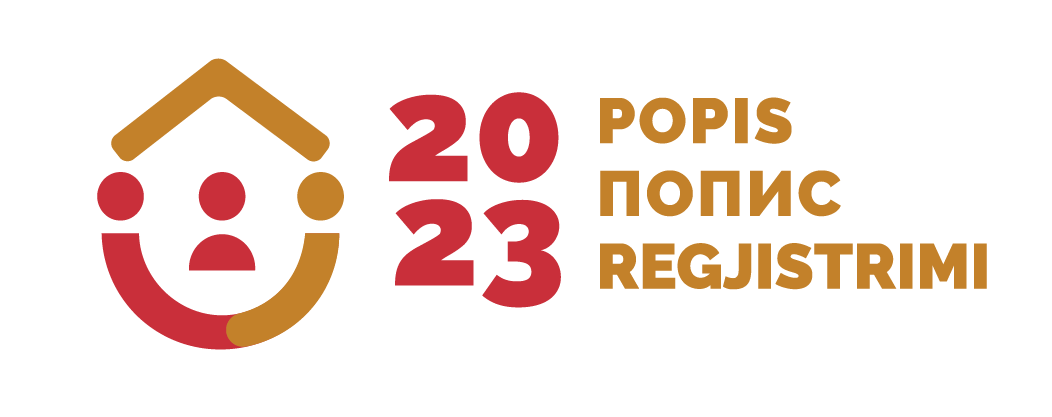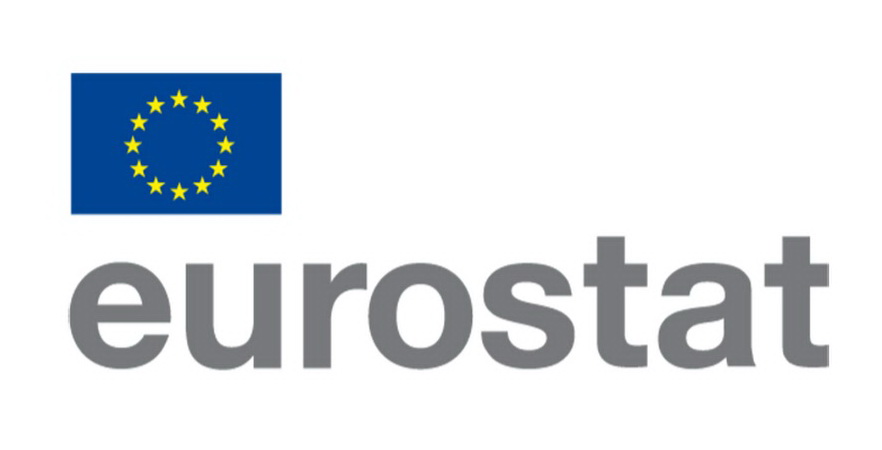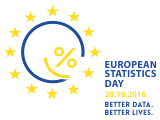| Category: |
Economic statistics |
| Area: |
Domestic trade |
| Survey / data collection: |
Turnover index in retail trade |
Note: For any question on metadata, please contact MONSTAT metadata support.
| 1. Contact Vrh |
| 1.1. Contact organization: |
Statistical Office of Montenegro - MONSTAT |
| 1.2. Contact organization unit: |
Department for short - term indicators |
| 1.2. Contact organization unit: |
IV Proleterske 2, 81000 Podgorica, Montenegro |
| 2. Metadata update Top |
| 2.1. Metadata last certified: | 17 November 2023 |
| 2.2. Metadata last posted: | 29 December 2023 |
| 2.3. Metadata last update: | 17 November 2023 |
| 3. Statistical presentation Top |
| 3.1. Data description: | The aim of the survey is to collect the data necessary for calculation the index of total retail trade turnover in Montenegro. The data obtained are used to monitor the volume and dynamics of turnover movements, to analyze the volume and changes in the structure of personal consumption, to analyze the seasonal characteristics of consumption and to view the overall economic trends. |
| 3.2. Classification system: | NACE Rev. 2 and COICOP |
| 3.3. Sector coverage: | Reporting units are all enterprises (companies) whose main activity is trade and who are in the Statistical Business Register registered in the area of 47 NACE Rev2. |
3.4. Statistical concepts and
definitions: | Indices of turnover in retail trade at current prices show the dynamics of the turnover of retail trade in the referent period.
Indices of turnover in retail trade at constant prices show the dynamics of turnover volume of retail trade in the referent period.
Retail trade turnover as defined in CR 1503/2006:
Turnover of goods in retail trade shows the value of goods delivered by retail trade enterprises/organizations to final consumers (primarily to final consumers for personal consumption or use in households, and to legal and physical entities for performing their activities). The definitions of retail trade research variables are in line with ESS standards. |
| 3.5. Statistical unit: | For retail trade survey the reporting and observation unit are the same. Units of statistical observation and reporting for which data are provided, are enterprises with main activity in the Statistical Business Register is in Division 47 NACE Rev2. |
| 3.6. Statistical population: | Observation units are all enterprises in Montenegro that have submitted VAT returns to the Revenue Administration which are in the statistical business register classified in area 47 of activity classification (NACE Rev.2). |
| 3.7. Reference area: | The whole territory of Montenegro. |
| 3.8. Time coverage: | Retail trade data have been produced for more than 50 years, but since 2006 they have been working according to the new methodology. By 2006, all businesses engaged in retail trade were included in the sample, regardless of the activity they are registered in. Since 2006, only companies that are registered in the 47 KD2010 (retail trade) sector are in the sample frame. Since 2006 there has been no interruption of the series. |
| 3.9. Base period: | The base year is 2015. |
| 6. Institutional mandate Top |
6.1. Legal acts and other
agreements: | The Law on Official Statistics and Official Statistical System (Official Gazette of Montenegro No 18/12 and 47/19) defines provisions for collection, processing, and dissemination of data. The Law provides to the Statistical Office legal powers to collect and access the data necessary for the implementation of Programme and Annual Plan. The Law gives a priority to the use of administrative data and right of access to individual data that are a result of survey of other official statistical producers. As an annex to legal provisions, Statistical Office has signed several memoranda on cooperation with administrative data providers. |
| 6.2. Data sharing: | Signed agreement on cooperation with the official statistical producers:
1. Revenue and customs Administration
2. Ministry of Finance
3. Central Bank of Montenegro
4. Trilateral agreement (MONSTAT, Ministry of Finance, and Central Bank of Montenegro)
International institutions:
1. EUROSTAT
2. UN organizations
3. IMF
4. World Bank |
| 7. Confidentiality Top |
| 7.1. Confidentiality - policy: | Articles 53-60 of the Law on Official Statistics and Official Statistical System (Official Gazette of Montenegro No 18/12 and 47/19) provide a framework for protection, use, and transmission of confidential data. MONSTAT has produced two comprehensive rulebooks that cover the procedures for individual data protection as well as keeping individual records. With purpose of the meeting legal framework on functioning of security system and statistical confidentiality there was adopted the Rulebook on Keeping Statistical Data by which Manner, Time, Technical Conditions and Organization of Statistical Data Storage to Prevent Their Destroying, Misappropriation, and Unauthorized Use is Regulated as well as the Rulebook on Contents and Manner of Keeping Records on Users of Individual Statistical Data by which contents and manner of keeping records on users of individual statistical data is regular.
Pursuant to the Article 59, an access to the confidential data is limited to persons performing duties and tasks of official statistical producer and up to the stage the data are necessary for official statistical production. Persons that performs duties and tasks within official statistical producers must sign the statement on respecting the principle of confidentiality.
Law on Official Statistics and Official Statistical System is aligned with the Regulation No 223/2009 and the Regulation (EU) 2015/759 from 29 April 2015 that also regulate confidentiality provisions.
The Government of Montenegro adopted the Statement on Commitment of Confidence in Official Statistics (Commitment of Confidence). |
7.2. Confidentiality - data
treatment: | Statistical Office staff members sign confidentiality statement on respecting data confidentiality, and for any deliberate violation of statistical data confidentiality, important legal measures are envisaged. Article 54 of the Law on Official Statistics and Official Statistical System of Montenegro (Official Gazette of the Republic of Montenegro No 18/12, 47/19) regulates that data collected, processed, and stored for purpose of official statistics shall be considered confidential if they allow reporting units to be identified, either directly or indirectly, thereby disclosing individual information. The reporting unit directly identified means the identification of a reporting unit from its name or address, or from assigned identification number. Indirect identification means the identification of a reporting unit by the deduction, having into account all measures to identify a reporting unit. Data for the use of which reporting units gave explicit approval shall not be considered confidential. |
| 8. Release policy Top |
| 8.1. Release calendar: | The Law on Official Statistics and Official Statistical System (Official Gazette of Montenegro No 18/12 and 47/19) stipulates that official statistical producers prepare, update, and publish Statistical Release Calendar. It is published on the website of Statistical Office not later than 20 December for the next year, for all official statistical producers that includes date of releasing statistical data. Any change in date of releasing in the Calendar is published in advance in accordance with the Procedure on Unplanned Revisions. |
| 8.2. Release calendar - access: | http://www.monstat.org/eng/page.php?id=1179&pageid=12 |
| 8.3. User access: | General aim of official statistical producer is to meet the needs of users, and to make an access to statistical data to users in an understandable manner, simultaneously and under the same conditions. Statistical Office is obliged to produce and disseminate official statistics in objective, transparent and professional manner, so that all users are equally treated. |
| 10. Accessibility and clarity Top |
| 10.1. News release: | Releases are available on the website: https://www.monstat.org/eng/page.php?id=445&pageid=162 |
| 10.2. Publications: | Statistical Office publishes the following regular publications: 1. Statistical Yearbook, 2. Montenegro in figures, 3. Monthly statistical review. In addition to the above regular ones, Statistical Office publishes also additionally publications. Some of the most important additional publications are as it follows: 1. Women and Men in Montenegro, 2. The most often used statistical data All publication published by Statistical Office are available at the following link: http://monstat.org/eng/publikacije.php |
| 10.3. Online database: | Retail trade data are available on web site:
http://monstat.org/eng/pxweb.php |
| 10.4. Micro-data access: | The Law on Official Statistics and Official Statistical System (Official Gazette of Montenegro No 18/12 and 47/19) regulates rules under which external users can obtain an access to individual data for needs of research. Article 58 defines types of scientific and research organizations that can obtain such data. Providing individual data without identifier is possible only upon a written request of scientific and research institutions, with purpose of performing scientific and research activities as well as international statistical organizations and statistical producers from other countries.
Research entity signs the agreement with Statistical Office, and it signs the statement on respecting the confidentiality principle.
Official statistical producers keeps a separate records on users and purpose of using the statistical data given to these users. |
| 10.5. Other: | Data on retail trade turnover/volume of sales are transmitted to Eurostat via eDamis. |
10.6. Documentation on methodology:
domain: | Methodology of retail trade is available on website: http://monstat.org/uploads/files/trgovina/Methodology_Turnover%20index%20in%20retail%20trade_2020.pdf |
| 10.7. Quality documentation: | The Law on Official Statistics and the Official Statistical System ("Official Gazette of Montenegro" No. 18/12 and 47/19) defines the commitment to quality, which ensures that producers of official statistics in Montenegro work and cooperate in accordance with international principles of quality of the statistical system.
In accordance with the ESS Quality Declaration, Article 338 of the Treaty on the Functioning of the EU, Regulations 759/2015 and 223/2009 and the European Statistics Code of Practice, the following documents are adopted:
1. Quality Strategy of the Statistical Office
2. Guide for the implementation of the Quality Strategy in the Statistical Office;
3. Implementation plan |
| 11. Quality management Top |
| 11.1. Quality assurance: | Statistical Office has chosen the implementation of elements of TQM (Total Quality Management) model that foster development and improvement of functioning of:
- Institution,
- Official statistical result production, and
- Individual.
Within middle-term deadline, Statistical Office has chosen the TQM implementation through the following objectives:
1. Strong commitment to users and other interested parties,
2. Quality statistical processes and products,
3. Professional orientation of staff members,
4. Constant improvements,
5. Reduction of overburden of reporting units. |
| 11.2. Quality assesment: | Quality is monitored throughout all stages of data production, by the responsible statisticians, according to specifications for concrete surveys.
The definitions of the basic variables and the methodology of the calculation of results (absolute data, current and constant price indices) are fully aligned with the recommendations of Eurostat in the area of short-term indicators (Council Regulation No 1165/98 ANEX C). |
| 12. Relevance Top |
| 12.1. User needs: | International users:
- Eurostat,
- World Bank,
- UN organizations,
- International Monetary Fund
National users:
- Ministries and other public administration bodies,
-Local government, and
-Other local government bodies.
- Central bank,
- Non-governmental organizations,
- Students,
-Researchers,
- Media. |
| 12.2. User satisfaction: | The Statistical Office has adopted the Quality Management Strategy, the Guidebook to the Implementation of the Quality Management Strategy, as well as the Plan for the Implementation of the Quality Policy.
In order to measure the degree to which fulfills obligations towards users and within the new quality policy, the Statistical Office conducted User satisfaction survey.
The results of the survey are available on the Statistical Office website, link: https://www.monstat.org/uploads/files/kvalitet/2.%20Izvjestaj%20o%20zadovoljstvu%20korisnika%20-%202022_FINAL%20engleska.pdf |
| 12.3. Completeness: | The research is done on the basis of the full coverage of companies that are registered in area 47 (according to NACE Rev2 - classification of activities) and the data obtained by this research are fully aligned with regulation 1165/98. |
| 13. Accuracy and reliability Top |
| 13.1. Overall accuracy: | Reporting units are all enterprises (companies) whose main activity is trade and who are in the Statistical Business Register registered in the area of 47 NACE Rev2. Enterprises with turnover = 0 are excluded. The source of data is the Revenue and customs administration. |
| 13.2. Sampling error: | Not applicable. |
| 13.3. Non-sampling error: | Not applicable. |
| 14. Timeliness and punctuality Top |
| 14.1. Timeliness: | The first results are published 30 days after the end of the reference quarter.
The administrative data base is obtained on a monthly basis, 25 days after the end of the month. Generally, data collection ends 25 days after the end of the reference quarter. |
| 14.2. Punctuality: | Accuracy indicator represents the time difference between Actual date of the effective provision of the statistics and Scheduled date of the effective provision of the statistics.
P3 = dact - dsch
In retail trade survey, punctuality = 0, which means that we have met the calendar: not earlier and not later published. |
| 15. Coherence and Comparability Top |
15.1. Comparability -
geographical: | Methodology of our retail trade survey is the same as in other European countries, that is the reason why our data are comparable geographically with data of other EU countries. |
| 15.2. Comparability over time: | Retail trade data have been published annually since 1955 (processed by the Federal Bureau of Statistics of Yugoslavia). Until 2006, the sample frame included all enterprises engaged in retail trade, regardless of the activity in which they were registered. Since 2006, the data are calculated according to the new methodology and only companies registered in area 47 KD2010 (retail) are included in the sample frame. Comparable data are available from 2000 to now. |
15.3. Coherence - cross
domain: | The data from other areas of economic statistics (Structural Business Statistics, National Accounts, Tourism statistics, etc. are used to do cross-checking the data. |
| 15.4. Coherence - internal: | Data are internal coherent. Higher level aggregations are derived from detailed indices according to well-defined procedures. |
| 17. Data revision Top |
| 17.1. Data revision - policy: | Statistical Office has adopted the revision policy and it is available on the website http://www.monstat.org/eng/page.php?id=1411&pageid=1411 |
| 17.2. Data revision - practice: | Regular revisions are used in the monthly retail survey. Large and unplanned audits are used only in special cases defined by the revision policy. |
| 18. Statistical processing Top |
| 18.1. Source data: | Data are collected on a sample of reporting units including Statistical Business Register (SBR) in MONSTAT which are registered according to 47 NACE Rev. 2 classifications. |
18.2. Frequency of data
collection: | Monthly. |
| 18.3. Data collection: | The Administration of Taxes and Customs submits databases by email every month. |
| 18.6. Adjustment: | Calendar and seasonally adjusted data are transmitted to Eurostat on a regular basis. |







